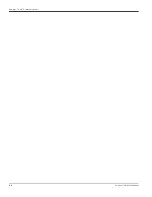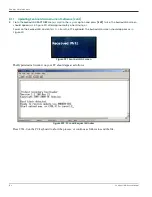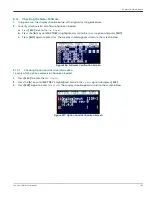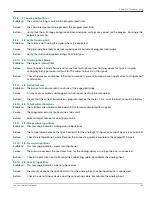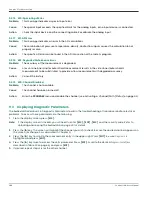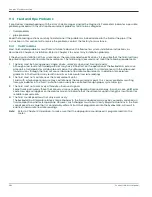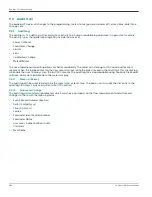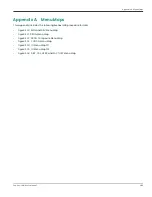
Chapter 9. Troubleshooting
202
Sentinel LNG User’s Manual
9.4 Fluid and Pipe Problems
If preliminary troubleshooting with the
Error Code Messages
and/or the
Diagnostic Parameters
indicates a possible
problem, proceed with this section. Measurement problems fall into two categories:
•
fluid problems
•
pipe problems.
Read the following sections carefully to determine if the problem is indeed related to the fluid or the pipe. If the
instructions in this section fail to resolve the problem, contact the factory for assistance.
9.4.1 Fluid Problems
Most fluid-related problems result from a failure to observe the flowmeter system installation instructions, as
described in Chapter 2,
Installation
. Refer to Chapter 2 to correct any installation problems.
If the physical installation of the system meets the recommended specifications, it is possible that the fluid itself may
be preventing accurate flow rate measurements. The fluid being measured must meet the following requirements:
1.
The fluid must be homogeneous, single-phase, relatively clean and flowing steadily.
Although a low level of entrained particles may have little effect on the operation of the
Sentinel LNG
, excessive
amounts of solid particles will absorb or disperse the ultrasound signals. This interference with the ultrasound
transmissions through the fluid will cause inaccurate flow rate measurements. In addition, temperature
gradients in the fluid flow may result in erratic or inaccurate flow rate readings.
2.
The fluid must not cavitate near the measurement point.
Fluids with a high vapor pressure may cavitate near the measurement point. This causes problems resulting
from gas bubbles in the fluid. Cavitation can usually be controlled through proper system design.
3.
The fluid must not excessively attenuate ultrasound signals.
Some fluids, particularly those that are very viscous, readily absorb ultrasound energy. In such a case, an
E1
error
code message will appear on the display screen to indicate that the ultrasonic signal strength is insufficient for
reliable measurements.
4.
The fluid soundspeed must not vary excessively.
The
Sentinel LNG
will tolerate relatively large changes in the fluid soundspeed, as may be caused by variations in
fluid composition and/or temperature. However, such changes must occur slowly. Rapid fluctuations in the fluid
soundspeed, to a value that is considerably different from that programmed into the
Sentinel LNG
, will result in
erratic or inaccurate flow rate readings.
Note:
Refer to Chapter 3,
Operation
, to make sure that the appropriate soundspeed is programmed into the
meter.
Summary of Contents for Sentinel LNG
Page 2: ......
Page 4: ...ii no content intended for this page...
Page 6: ...Preface iv Sentinel LNG User s Manual...
Page 12: ...Contents x Sentinel LNG User s Manual...
Page 26: ...Chapter 1 Features and Capabilities Sentinel LNG User s Manual 14...
Page 178: ...Chapter 5 Using PanaView 166 Sentinel LNG User s Manual...
Page 184: ...Chapter 6 MODBUS Communications 172 Sentinel LNG User s Manual...
Page 202: ...Chapter 7 HART Communications 190 Sentinel LNG User s Manual...
Page 220: ...Chapter 9 Troubleshooting 208 Sentinel LNG User s Manual...
Page 222: ...Appendix A Menu Maps 210 Sentinel LNG User s Manual...
Page 230: ...Appendix A Menu Maps Sentinel LNG User s Manual 218...
Page 232: ...Appendix B CE Mark Compliance and High Noise Areas 220 Sentinel LNG User s Manual...
Page 236: ...Appendix C Data Records 224 Sentinel LNG User s Manual...
Page 240: ...Appendix C Service Record 228 Sentinel LNG User s Manual...
Page 244: ...Index 232 Sentinel LNG User s Manual...
Page 246: ...Warranty 234 Sentinel LNG User s Manual no content intended for this page...
Page 247: ......



